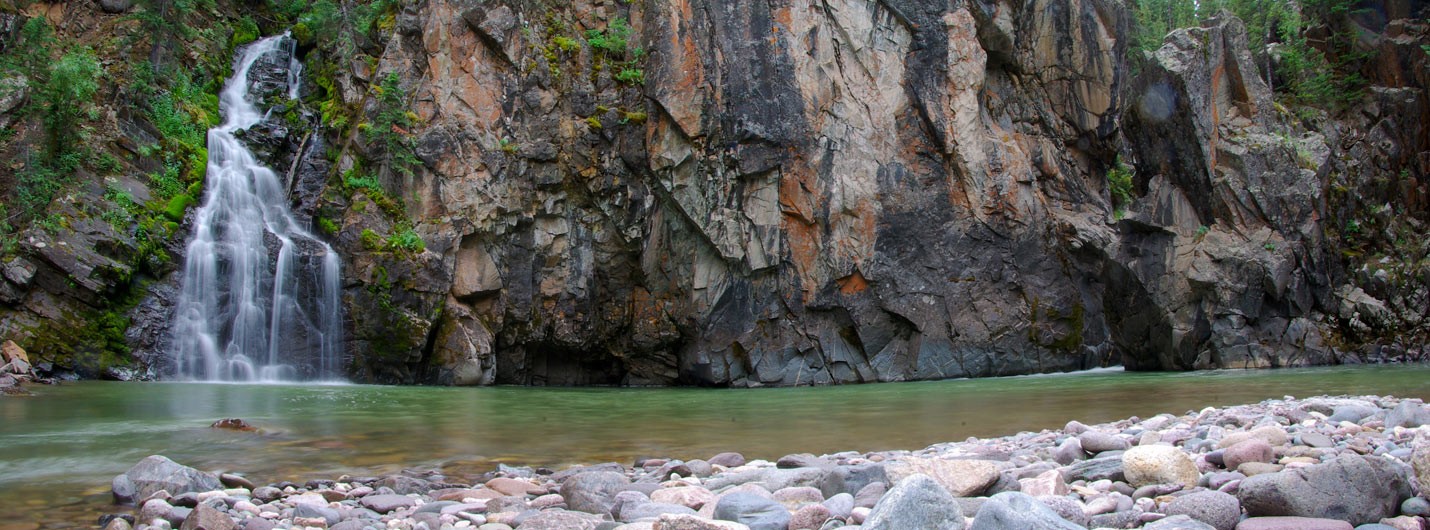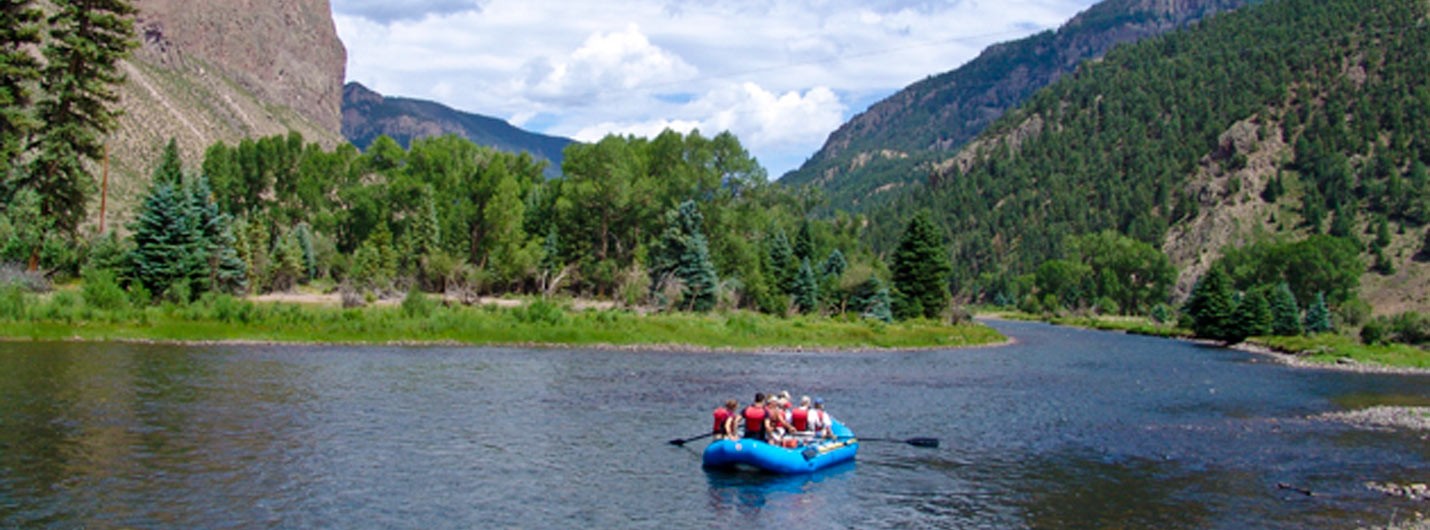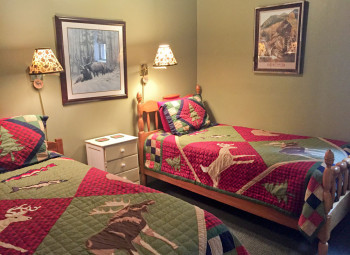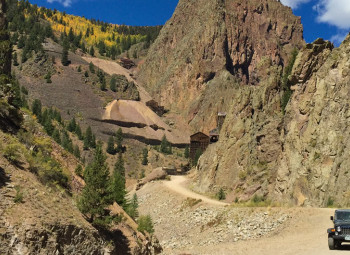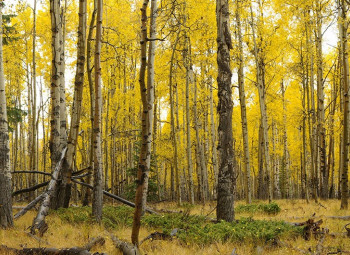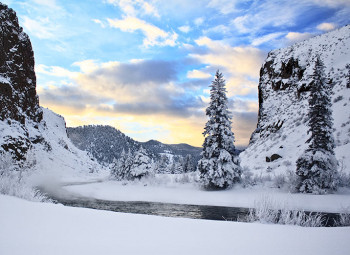Night Lights of Creede
By Clyde Gooseman
Actually, the thing that makes the Creede area an excellent place for viewing the night sky is the absence of light. If you’ve seen a satellite image of the United States at night you’ve no doubt noticed the light from the highly populated Northeast and East coast. As you move west you can pick out individual cities, Chicago, Kansas City, Oklahoma City, stand out on their own. A little further west the front range pops out as Colorado Springs and Denver light up the I-25 corridor. The further west you go the darker it gets. Creede has the additional benefit of being surrounded by wilderness areas. The La Garita to the east, Gunnison to the north and the largest wilderness area in Colorado, the Weminuche to the south and west.
That’s enough about lights, lets talk about air. First there’s not as much of it. At 8,852 feet elevation we have about 8,000 feet less air to look through than say Dallas, Texas does. Second, the air is dry. What moisture the Sierra Nevada’s don’t suck out of the atmosphere the western slope does. If you remember your high school physics, dry air cools down much faster than moist air, which brings us to the third benefit, “lack of heat”; you know, that radiation you see coming off the highway on a hot summer day. These four things, absence of light and the thin cool, dry air make Creede a wonderful place for viewing the night sky.
Let’s start the evening by looking at the planets. In the western sky right after the sun goes down you will see two bright stars, one is Jupiter and the other will be Venus. They will be dancing around in the constellations Cancer and Leo for most of the summer. Sometime in July depending on where you’re at, Saturn will rise over the eastern San Juans about the time Venus and Jupiter set. That’s about all the planet stuff that’s going to happen this summer.
There are some stars of interest. I am assuming the reader has some knowledge of the night sky. Maybe just a few constellations that you grew up with, the Big Dipper (Ursa Major) is a good place to start. It’s in the northwestern sky. If you look at the second star from the end of the handle you’ll see two bright stars very close together. The brightest star is Mizar, the other bright one is nameless as far as I know. If you look very closely at Mizar you might be able to see another star touching it. That would be Alcor. This is a binary solar system (two stars in the same solar system). Early astronomers named them after two mythological brothers who fought all the time. Alcor orbits around Mizar every eleven days. While we’re here if you draw a line through the last two stars of the pot and extend it in the direction the pot is pouring, it will intersect with Polaris the North Star at approximately seven units. A unit will be in this case the distance between the two pot stars. Use your fingers or hand as a guide.
Now follow the arc of the handle of the big dipper to the southwest. The arc will intersect with the very bright star Arcturus; Hence the saying “Arc to Arcturus”. If you keep going you will “speed on to Spica”, in the far western sky. Acrturus is the third brightest star in the night sky. If you move slowly straight east from Arcturus you will come to a semi-circle of stars called the Corona Borealis. Boreas is the Greek god of the north wind and winter. When he takes his crown off in October his anger swells and it becomes cold and windy. While he wears his crown during the summer though it stays warm and calm. Not to make Boreas mad, but I like to think of his crown as a bowl of sugar water. Just to the east of the bowl is a butterfly also called Hercules. The two stars that make up Hercules waist are the body of the butterfly. Now if you look to the leading edge of the left wing as it’s flying toward the bowl, about two-thirds the distance from the head to the end of the wing, you will see a faint glow. That is the Hercules cluster or M13. In the 1920’s it had about twenty thousand stars in it. By the 1980’s it had grown to about two hundred thousand stars in it. Now in the 2010’s it is reported to have about two million stars in it. No, it didn’t grow. The technology to see the universe has grown exponentially.
Now if you draw a line from Arcturus through M13 to the next brightest star you’ll come to Vega, the forth brightest star in the night sky. If you look right next to Vega to the southeast, you’ll see four stars that form a rhombus or squashed rectangle. The two farthest south stars are bookends for the Ring Nebula or M57. The Ring Nebula is the remnant of a supernova that exploded about twelve hundred years ago. The monks that recorded it said you could read by its light at night. Now you can only see it through a telescope. Okay, one more object. Move from Vega to the east and you’ll see five or six bright stars that form a cross. This is the constellation Cygnus the Swan. The top of the cross is pointing toward the northern horizon. Some folks refer to it as the Northern Cross. If you look to the bottom of the cross you will see Albireo. It is a blue and gold double binary. That is two stars in the same solar system, (remember Mizar and Alcor). A double is two stars or in this case two solar systems that line up in the same line of sight from earth.
Well that ought to keep you busy for a night or two. Can’t stay out too late, it starts to get cold. Don’t you just love these San Juan Mountains? During the months of June, July and August I will try to have an Astronomy program once a week here in the upper Rio Grande Valley close to the Silver Thread Byway. Check with the Information Centers for time and place. I have a twelve-inch Dobsonian telescope and you’re more than welcome to bring your own telescope, binoculars and naked eyes. Please, try to clothe the rest of you though.


